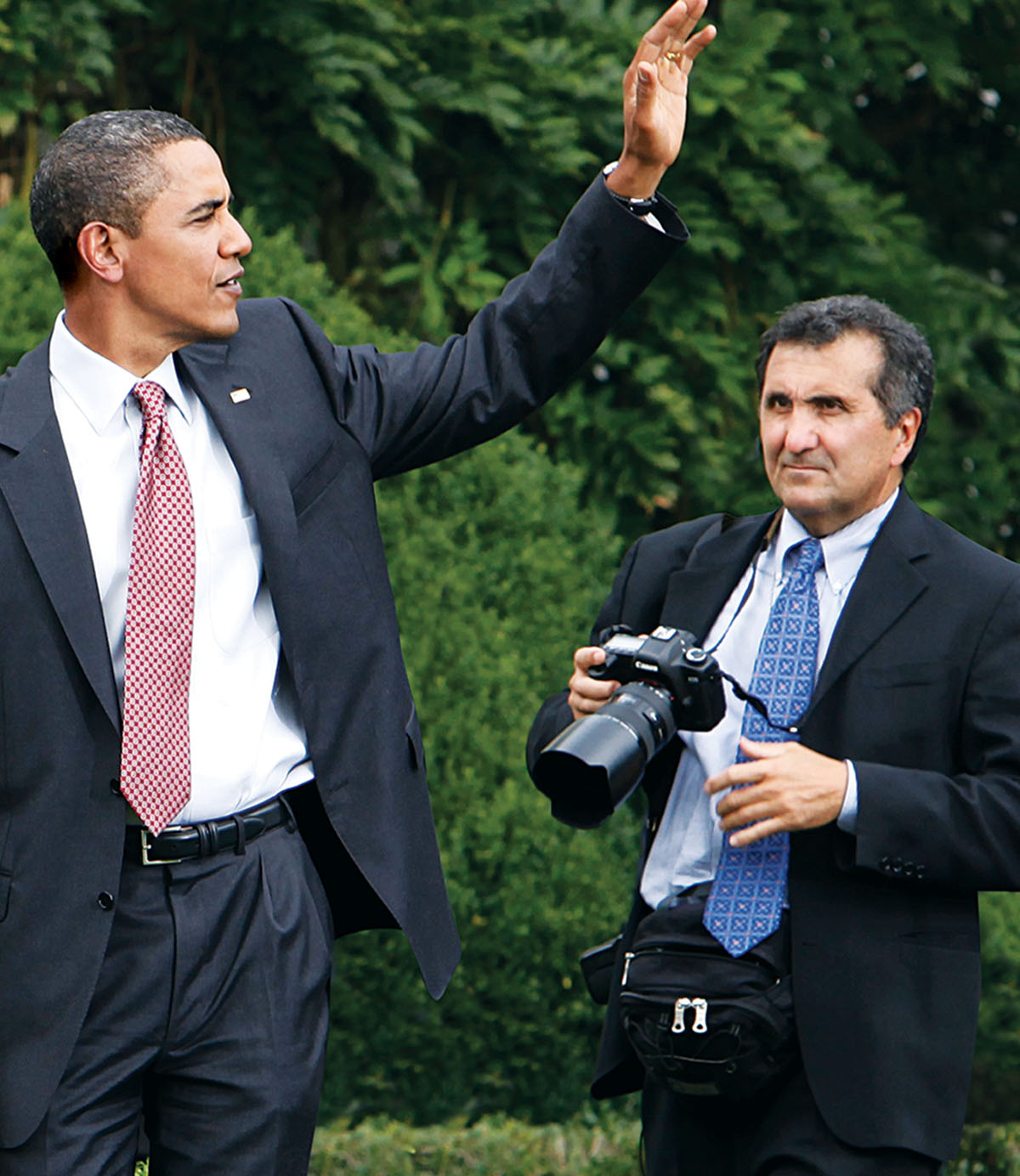Hubbub: Pete Souza

Photograph by Charles Dharapak/AP Images
You may not know official White House photographer Pete Souza. But you know his work — unless you’ve been living in a cave. Or maybe a heavily fortified mansion in Pakistan. Souza has worked as a photojournalist everywhere from Afghanistan to the Reagan White House (where he was a junior photographer) to the Obama campaign trail, but the South Dartmouth native and BU grad will forever be remembered for producing the iconic shot of President Obama’s Situation Room during the Osama bin Laden raid.
So did they ask you about your politics when you applied for this job?
No. Actually, the Reagan people did, as I recall, but they didn’t really care. I grew up in a Democratic family not far from where JFK had his summer house.
How many shots do you take a day at the White House?
Between 500 and 1,000. I get the president’s private schedule and cover everything he does. The one thing I learned early on about this president is that he goes off schedule a lot. He will wander down to somebody’s office in the West Wing all the time.
Access-wise, it’s like you wake up in the president’s underwear drawer and tuck him in at night. Is there anywhere you can’t go?
Not really. I can’t think of a place. If you look back to the first photographer with this kind of access, it was Yoshi Okamoto with L.B.J., so I think he set the bar. Every president’s a little different. Fortunately, I’ve developed a good sense of trust with this one.
Is he ever like, “Hey, Pete, knock it off”?
At this point I think he’s used to it. I like to think I have a small footprint. So if there’s a meeting and it’s not historically that important, I sometimes won’t stay very long so that I’m not taking pictures of him every minute of every day. I’ve come to know when he wants it to be a private meeting, so I’ll make sure I get a usable photo and then I’ll just leave.
The night that bin Laden was killed and you took that famous shot, were they just like, “Sooo, we’re going to need you to stay late”?
I want to be somewhat vague, just given the sensitivity of that mission. But to give some background on that particular photo, the Situation Room is composed of several different conference rooms. There’s the big conference room, where the president usually holds his meetings. To monitor what was going on in the bin Laden mission, they moved into the smaller conference room, where the telecommunications were set up. Which is why people were jammed into that room and the president was off to the side — everybody just kind of grabbed a seat. In terms of that particular photograph, I was trying to choose one that was representative of what everybody in that room was going through emotionally. I’ve gone back through the many pictures that I took during that meeting, and I’m still convinced that we chose the right one.
How many did you take?
About 100, as I recall. As you can imagine, when you have that many people in the room, somebody’s eyes inevitably are closed.
Were you floating around trying to get different angles? You’ve got to make sure you don’t stick your head in front of the screen, right?
That room was so small and there were so many people jammed in there that I just basically stayed in the far corner. I could not move. There were people in front of me, and there was no place else to go. Fortunately, I chose a good spot.
How on earth could you concentrate?
I’ve been doing this job for two and a half years, and I’ve been in hundreds of meetings. I don’t know how to describe it other than that it didn’t really dawn on me. I don’t want to say that it was just another meeting, because it certainly wasn’t. But I’ve been in so many sensitive meetings, historical meetings, that I’m just trying to do my job. I’m thinking about the technical aspects of what I’m photographing, the composition, trying to capture the moment.
Am I allowed to ask why Hillary Clinton had her hand in front of her face? Was she really just coughing?
I think I’ll let Secretary Clinton answer that question.
Follow Jason Schwartz on Twitter @SchwartzHub.